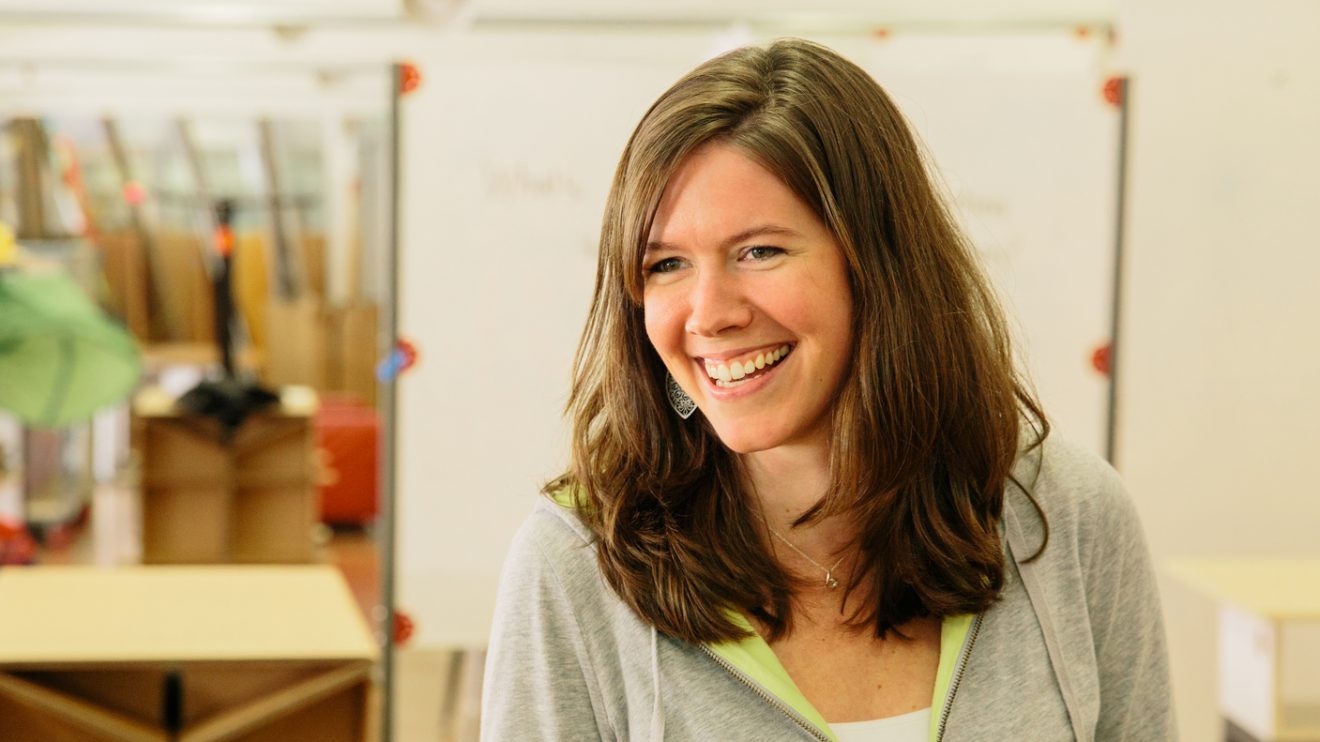STANFORD, Calif — Design thinking is changing the game for existing businesses and startups across the country. It’s the cognitive, strategic and practical processes by which design concepts are developed by designers and/or design teams. Sounds something like a blueprint, right? Wrong. Kelly Schmutte, a designer and lecturer at Stanford University’s Hasso Plattner Institute of Design, aka the DSchool, broke it down for us and gave us some more insight on why this new concept is so important.
“I define design thinking as a set of tools that helps to give the world ideas that are grounded in real human needs,” Schmutte says. “Its roots are in human-centered design and also kind of borrows from lean startup, but the phrase design thinking is a little newer.”
Essentially there are five steps in design thinking: empathise, define (the problem), ideate, prototype and test. The first step of empathise consists of trying to gain an understanding of the problem you’d like to solve, or the source of your inspiration. Then you define the problem. This is where you gather all the information and analyze what you came up with in the empathise stage. Thirdly, we move on to ideating the issue, which is when you begin to think outside the box and identify what can be done. After that, it’s time to have fun and build your prototype, producing a scaled-down version of the product to make sure it properly works. Basically, you’re experimenting. Lastly, your team runs the test on the products using the best solutions you came up with while prototyping. “Sometimes people get design thinking shared as a recipe or a process diagram and I think it’s important to share that that’s not where the magic is,” Schmutte explains. “It’s not in the what but the real skill and value come from actually practicing them.”
If you’ve ever been around someone running a business or have done research to start your own business, this language should sound a little familiar. Design thinking has been effective in helping many startups become successful and not just in the design industry. Schmutte, a Stanford graduate used the innovative concept when starting her company called PerfectFit Pointe, which created a cool sitting solution for ballet pointe shoes with custom-molded shoe inserts made from silicone putty. It dramatically reduces long-term damage associated with practicing ballet, like distributing weight evenly and stopping abrasions like blisters and corns from forming on dancers’ feet. Growing up, Schmutte admits she knew something had to be done. “From the time I started dancing pointe when I was 11, I felt like there’s got to be a better way to do this,” Schmutte says of her first experience.
Although the 34-year-old has a background in dance, she says design thinking is what gave her the courage to start the project, being exposed to certain tools in order to take action. Schmutte says design thinking can help others, especially entrepreneurs because while it’s easy to think of a solution for a problem you think exists, there are plenty of blind spots on that road that can easily be missed, and a critical part of design thinking is getting user feedback. With this new process, you can attack blind spots head-on.
DSchool is modeling creative behavior to encourage people to advance their own design practice. Their innovative projects like the @Stanford Project, that Schmutte manages, have been somewhat of the backbone of this growing trend. @Stanford Project is an online and in-person exhibit on higher education taking place in 2025, but imaging from the perspective that its the year 2100. With DSchool stepping its foot into just about every industry, shockingly enough, the one Schmutte would like to see more work done in would be emerging tech. “We make many of the same tools and methods that emerging technology uses. We think being able to use design to help kind of break apart how some of the technologies work and how to be more inclusive of different voices is really exciting,” Schmutte says. “But again, it’s all about keeping the human needs at the center.”







Add Comment